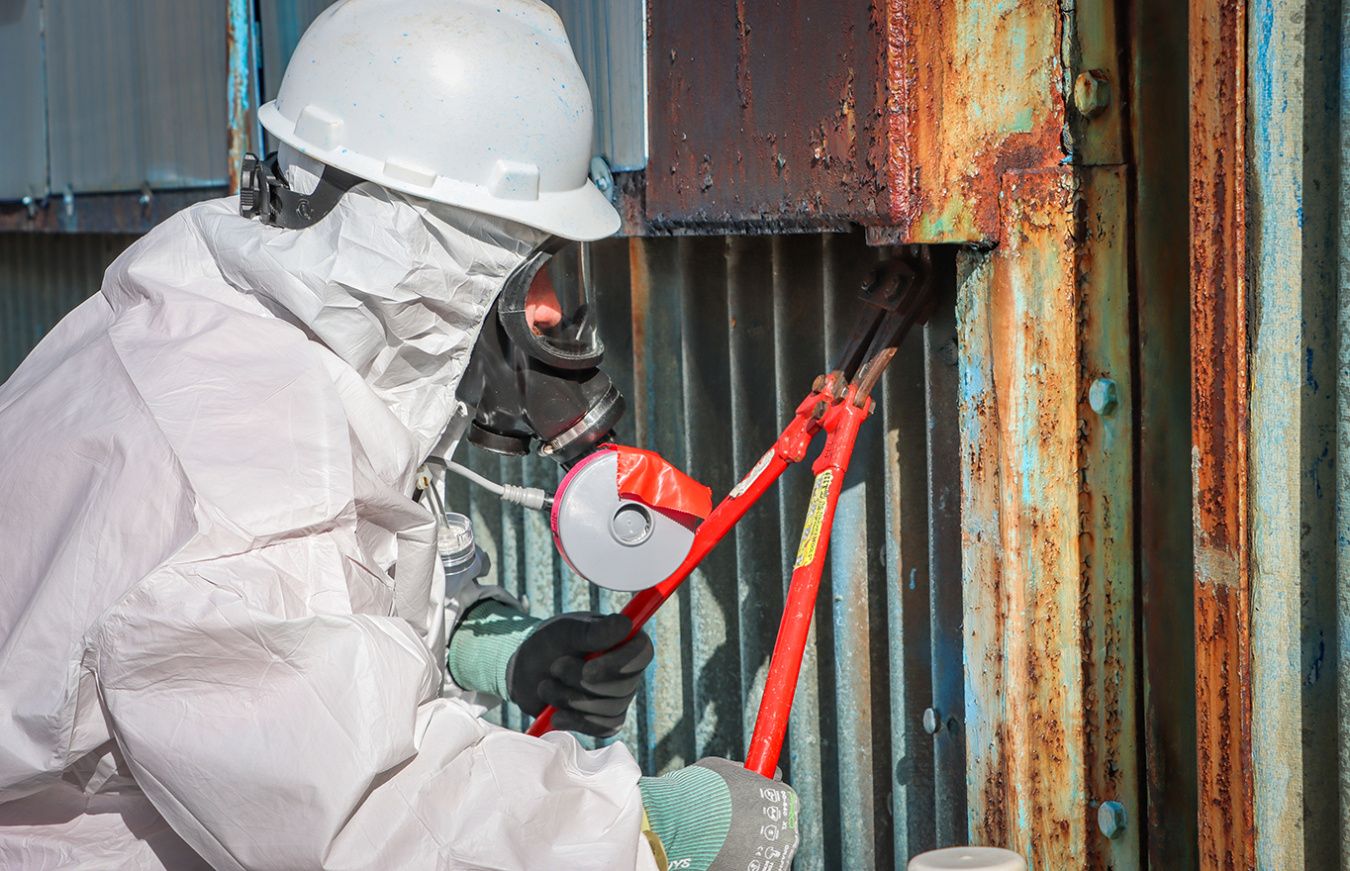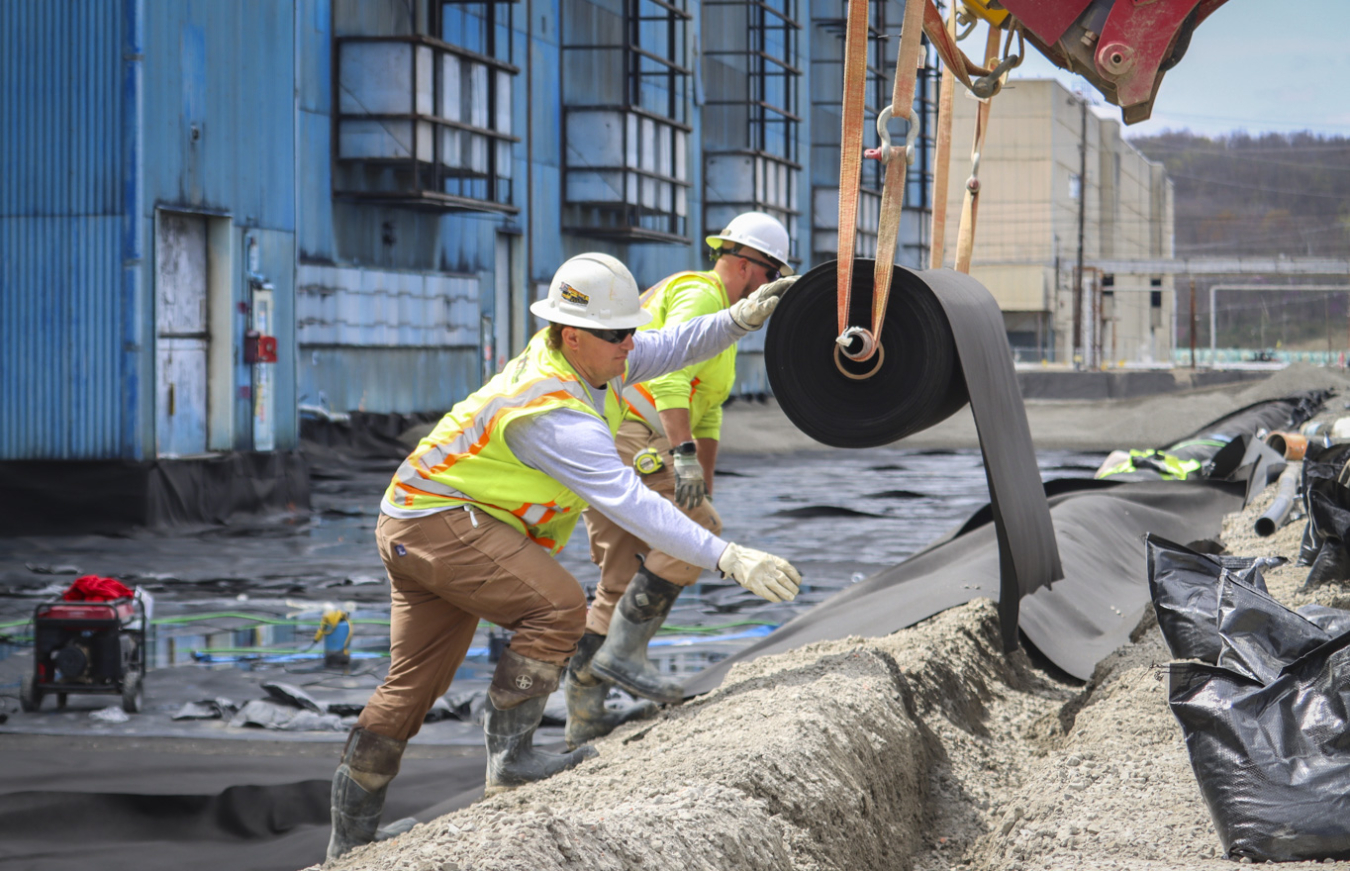Cleanup crews recently removed the first transite panel from X-333 to prepare for the demolition of the second of three former uranium enrichment process buildings at the Portsmouth Site.
Office of Environmental Management
May 13, 2025Asbestos Worker Luke Fryman cuts the first bolt of the X-333 Process Building at the Portsmouth Site to kick off demolition activities.
PIKETON, Ohio — Cleanup crews recently removed the first transite panel from X-333 to prepare for the demolition of the second of three former uranium enrichment process buildings at the Portsmouth Site.
Teardown of all three process buildings — among the largest facilities in the DOE complex — helps enable new opportunities for the local community to continue advancing U.S. energy and security goals, contributing to the goal of ushering in a new golden era of American energy dominance. Crews finished demolishing X-326 in 2022, and X-330 will be the third process building to be knocked down.
Transite, the outer panels covering the building, is a known asbestos-containing material that must be cautiously removed to meet environmental regulatory requirements.
“Transite removal is the first step toward the demolition process,” Federal Project Director Christy Brown said. “The workers will work in teams using personnel lifts. They will remove, lower, and stack each panel, one at a time, so it is a big job.”
Crews are set to safely remove more than 16,000 transite panels from the X-333 Process Building over the next 17 months. Each panel measures 8 feet by 4 feet and weighs 90 to 140 pounds.
“This is the first phase of bringing down the largest of the two remaining process buildings onsite,” Federal Project Director Jud Lilly said. “A lot of work has been done prior to this to ensure this process is completed efficiently and safely.”
Crews worked inside the building to complete deactivation of the two-story, 33-acre X-333 prior to beginning removal of the transite panels.
Demolition Specialist Jeff Howard sprays a blue fixative to the Portsmouth Site’s X-333 Process Building to maintain dust suppression on the transite panels.
Deactivation included characterizing the building and equipment from a radiological standpoint; disconnecting process equipment; segmenting, crushing and preparing waste for onsite or offsite disposal; removing asbestos and other hazardous waste; and isolating and disconnecting utilities, according to Lilly. Workers also installed fencing and removed above- and below-grade obstructions around the building.
Workers also completed several activities to ensure safety of the workforce, community and environment. For example, they installed a water detention system that includes a lined perimeter berm to capture water runoff from the X-333 demolition project area. The water will be sent to a treatment system designed to treat all contaminants of concern.
Air quality will also be maintained. Prior to demolition, crews will apply a fixative to the transite panels, inside and out, to reduce dust. They also will spray water on portions of the facility as they are demolished to suppress dust. Air monitors installed around the building will measure air quality to ensure the safety measures are effective.
Laborers Tyler Roach, left, and Taylor Brown help install a liner to construct a water detention system berm around the Portsmouth Site’s X-333 Process Building to prepare for the facility’s demolition.
Teardown of X-333 is set to take several years due to the facility’s size. It is scheduled to be completed in 2030. The team will look for opportunities to accelerate the schedule without compromising safety.
The Portsmouth Paducah Project Office conducts cleanup activities at the Portsmouth Site in accordance with a consent decree with the state of Ohio and director’s final findings and orders with the Ohio Environmental Protection Agency.
-Contributor: Shawn Jordan
To receive the latest news and updates about the Office of Environmental Management, submit your e-mail address.




